Emu farming and management
T. S. Arun¹, A. Irshad² and P. Gokulakrishnan2 1Division of Avian Genetics & Breeding, Central Avian Research Institute, Izatnagar, Bareilly, 243122 2Division of Livestock Products Technology, Indian Veterinary Research Institute, Izatnagar, Bareilly, 243122
Introduction
The poultry farming in India occupies an important position due to its enormous potential to bring about rapid economic growth, particularly benefiting the weaker sections due to its low investment requirement and short gestation period. Poultry which is considered as a backyard proposition in the early 1960`s has now been transformed into a strong agro based commercial activity having tremendous employability and income generating potential contributing nearly 0.7 % of national GDP and about 10% of livestock GDP. Indian poultry sector has been growing at around 8-10 % annually over the last decade with broiler meat volumes growing at more than 10 % while table egg at 5-6 % driven by increase in domestic consumption. Farmers in India have moved from rearing country birds in the past to rearing hybrids which ensure faster growth of chicks, higher eggs per bird, increased hatchability, low mortality rates, excellent feed conversion and consequently sustainable profits to the poultry farmers.
The changing food habit of the population in different parts of the country is another aspect that has to be considered while formulating strategies for augmenting poultry production. Diversification of poultry production in terms of giving focus on new species such as Turkey, Japanese Quail, Guinea Fowl, Emu and Ostrich can be a very good alternative.
Emu (Dromaius novaehollandiae) is native to Australia and is the second largest bird in the world by weight after ostrich. These birds are having a high economic value for meat, egg, oil, skin and feathers. It originated about 80 million years ago and was imported to United States around 1930. The leading countries of emu rearing are the United States and China. Emu is an important source of meat and its fat is peculiar in having medicinal value and also having lubricant properties. Emu farming is also popular in other parts of the world for its unique qualities. Emu farming, which began in India with a single farm in 1996, has presently expanded to around 2900 emu farms in more than 15 states accounting for 1.4 million birds (Naveena et al., 2013), mainly in states of Andhra Pradesh, Maharashtra, Tamil Nadu And Punjab. The main objective of these farms is to produce meat and products for local markets.
Habitat
Emus live in most habitats across Australia, although they are most common in areas of Sclerophyll forest and Savannah woodland, and least common in populated and very arid areas, except during wet periods. There are three subspecies recognized inhabiting sandy plain and open forest of northern, south-eastern and western south of Australia and adjacent islands. Emus have been shown to travel long distances to reach abundant feeding areas. Emus sleep during the night, and begin to settle down at sunset, although it does not sleep continuously throughout the night. Overall, an emu sleeps for around seven hours every day. Throughout the world the bird is mainly used for exhibition purpose.
Emu-Characteristics
| Emu-Characteristics | |||
| Adult weight | 40-60 kg | ||
| Height of bird | 5-7 feet | ||
| Reproductive capacity | 25-35 years | ||
| Age at sexual maturity | 18-24 months | ||
| Age of breeding | Male | 28-32 months | |
| Female | 24-30 months | ||
| Sound produced during breeding season | Male | grunting | |
| Female | booming | ||
| Egg production | more than 16 years | ||
| Chick weight | 330-360 g | ||
| Height of chick | 6-8 inches | ||
| Life span | 30 to 50 years | ||
| Feather | Chick | black and white | |
| Adult | black and brown | ||
It is a flightless bird, reaches height about 6 feet with a weight of 45-60 kg. There are no definite emu breeds but are captive bred (O’Malley, 2003). An adult emu weighs between 40 and 60 kg, with the female usually slightly heavier than the male. At birth emus are around 6-8 inches in height having black and white stripes. They are docile birds having a slender body than an ostrich. They can run at a speed of 40 km/hr. Chicks are able to walk within hours of hatch. As chicks, emu make a whistling, chirping or cheeping sound. Both the sexes have similar dark grey head and neck. Emus have long legs, with three large toes, each with a claw and body is covered with feathers. Emu feathers are long and brown, and grow in pairs with two shafts joined at the base. They are the only birds that have double feathers. Mature birds have bare blue neck with mottled body feathers. Emu completes its physical growth within 12 months, matures within 15 months, and starts laying at 2-3 years of age. The hen lays around 20-50 eggs per year. Emu eggs are beautiful dark green in colour. They are big eggs weighing between 400-750 g. Inside the shell is white.
Chick rearing
Proper hygiene and sanitation should be maintained during hatching. After hatching, chicks should be kept in incubator for 48-72 hrs for better yolk absorption to prevent various infections. Chicks hatched in incubators have to be brooded artificially until about 6 weeks of age. This period may have to be extended, depending on the outside environment and condition. If the weather is warm, chicks should have access to outside runs during the day from 1-2 weeks of age. Before receiving, the chick shed should be thoroughly cleaned and disinfected as well as litter material such as paddy husk, pine shavings, sand and sawdust should be spread on the floor. Appropriate brooding temperature should be maintained for effective management and better health. Provide brooding temperature of 900F/320C for first 10 days and 850F/290C till 3-4 weeks. If temperature is low, chicks usually crowd together in one place and at higher temperature they are well dispersed. Sufficient floor space with run space should be provided.
During brooding 23 hrs of light should be provided and 40W bulb is sufficient for every 100 sq ft. Adequate number of drinkers and feeders should be provided. Chick guard should be at 2.5 feet high for initial 3 weeks of age to prevent predators and the width should be increased as per requirement. Chick guard should be removed by 6 weeks of age. Proper drainage should be maintained to avoid dampness. Brooding is done with the help of infrared lamps, gas heaters or electrical bar heaters.
Grower management
During growing period male and female should be reared separately. Maintain the litter in dry condition to prevent fungal growth. Regular turning of the litter is necessary. Addition of dry paddy husk is economical. Effective drainage is a must to keep the floor dry.
Floor space at different age
|
Floor space at different age |
|||
| Brooder | Starter | Grower | Breeder |
| 0.5 sq ft | 4 sq ft | 100 sq ft | 250 sq ft |
Breeder management
Female emus begin to breed at about 18-20 months and continue to lay eggs for more than 16 years. Emus lay a beautiful, dark, emerald green egg that is in itself a masterpiece.
Breeding season in emu starts from December/January every year. Flock or pen mating system is usually practiced in emus. During pen mating male to female sex ratio should be maintained 1:1 and pairing should be done based on the compatibility thus we can improve the egg fertility. The pair is kept in individual breeding pens and provides privacy by trees and shrubs to induce mating. Mature hens and cocks should be separated after the breeding season. This will allow the birds to be more rested and they will begin egg production more readily when placed together for the breeding season in September. When start pairing hen and cock, always present the cock to the hen in her pen. Sometimes pairs are incompatible and do not mate. If this occurs, present the cock to a different hen. During flock mating sufficient space should be provided to avoid fighting. Equal male to female ratio should be maintained. Semen collection and artificial insemination is also found to be successful in emu.
Breeding behaviour
Emu females will compete over males as the breeding season progresses and less non-sitting males are available. Males usually remain in fasting condition and produce grunting sound. Females loosely hang down air sac and produce booming sound. The male emu generally sits on the nest. The female emu attracts the male emu by raising her tail feathers, squatting on the ground and leans forward. Duration of mating process is 15 seconds. However, violent outbursts only seem to occur when the male feels his brood is threatened. In general the emu is a docile and curious bird, but it tends to also be largely solitary. The Emu will usually only be been seen in groups during the breeding season and when food is scarce.
Incubation and hatching
Two types of incubation are there
- Natural incubation
Incubation period for emu is 56 days. A nest site should be provided to young female emu after attaining sexual maturity. In natural incubation male sit on the egg for brooding purpose. The female typically wanders off to start another clutch of eggs. It will sit on 7-12 eggs and begin to incubate the eggs and will forcefully defend the nest from predators or even female that attempt to lay more eggs in his nest. The male will not leave the nest during the period and will lose up to one-third of his weight. They stand several times in a day to roll the egg. When the eggs hatch, the male will care for and protect the chicks for another 18 months. Chicks will reach maturity and can begin breeding when they reach two years of age. It is better to shift the hatched chicks to brooder house. The main disadvantage of natural brooding is more space requirement.
| Parameter | Characteristics |
| Age at first laying | 2 ½ year |
| Time of egg laying | Morning (around 5.30 am-7.00 am) |
| Egg production | Average 25 eggs per year |
| Average weight of egg | 625 g (570-680 g) |
| Hatchability | 70-80% |
| Slaughter age | 12-18 months |
| Colour of egg | Varies from light to dark green |
2. Artificial incubation
For artificial incubation, eggs are collected once or twice daily and placed in an incubator. Eggs should be collected daily if possible to reduce pre-incubation problems and disinfected using a recognised egg-sanitation process. Egg should not be stored for more than 3 to 4 days at room temperature and can be stored in a cool room at a temperature of 10-16oC for up to 10 days. The eggs should be kept for approximately 12-18 hrs at room temperature before placing it in the incubator. Batches are then set in the incubator at regular intervals (setting batches at 10 day intervals is a common practice). The incubator will need to be run at a dry bulb temperature of 96-970F and wet bulb temperature of 70-800F at a relative humidity of 30-40% throughout the first 50 days of incubation.
| Parameter | Setter | Hatcher |
| Temperature | 97.5 0F | 96.5 0F |
| RH | 24-35% | 24-35% |
| Oxygen | 21% | 21% |
| CO2 | 0.05% | 0.05% |
| Turning | Once in 3 hrs | No Turning |
| Days | 1-48days | 49-51days |
The eggs will require turning a minimum of 3 times per day. This can be done manually or by using automatic turning devices in the incubator. Turning should be done till the 48th day of incubation. Eggs should always be turned an odd number of times per day when turned manually. This makes sure that the embryo does not go into the same position each night with the risk of it becoming stuck to the side of the shell and subsequently dying. At day 50, the eggs are transferred, the hatcher having slightly lower temperature and high humidity as compared to the incubator. The higher humidity helps to moisten the internal membranes and soften the shell to assist in the hatching process. Eggs are not turned during this period in the hatcher. By 52nd day chicks start pipping. The chicks should be dried and kept at least 24-72 hrs in the hatcher.
Feeding management
Emus are primarily herbivores. They eat grass, seeds, flowers, young plants and fruit. They also eat some insects (including caterpillars and grass hopper). They swallow small stones (called gastroliths or gizzard stones) which stay in the gizzard and help grind up food. In wild state, emus thrive on large insects, small vertebrates and nutrient concentrated parts of plants. Emus are short-day breeders and will decrease their feed consumption from 1.5 kg per day per bird to 0.45 kg per day per bird during the breeding period (Angel, 1993).
The digestive system of emu is similar to that of poultry excluding distinct crop. Proventriculcus acts as storage organ for food. Plant matters take 5-6 hrs on average, whereas grains take less than a day to two days depending on the nature of the food item. In small flocks, emu forage for fruits and insects. Under intensive system of rearing, the diet of the emu is based on concentrate feed containing a right proportion of protein, carbohydrates, fats and minerals for normal growth and development. In case of emu chicks, two types of feeding practices are common i.e. free feeding and hand feeding. In free feeding there may be chances of overfeeding or underfeeding, both have adverse effects. As compared to hand feeding, less labour is required for free feeding. But feed and water requirements should be adequate in hand feeding. Emu are excellent converters, 2.5/4 kg of feed to 1 kg of gain. Adult Emu consume on average 500 to 750 g of feed per day. Emu can exist on a simple diet and require a lot of water, drinking 4 to 6 liters daily. The average feed requirement ranged from 20 to 25 Kg per bird up to six months of age.
Nutrient requirements suggested for emu at different age groups (McDonald, 1991; Scheideler, 1997; Mannion, 1999; Angel, 2003; Aganga et al., 2003; Rao, 2004, Reddy, 2004; Kokan and Crewford, 2005)
| Parameter | Starter | Grower | Finisher | Breeder | Maintenance |
| ME (kcal/kg) | 2700 | 2600 | 2600 | 2600 | 2400 |
| CP (%) | 20 | 18 | 16 | 20 | 15 |
| Lysine (%) | 1.0 | 0.8 | 0.7 | 0.9 | 0.63 |
| Methionine (%) | 0.45 | 0.4 | 0.35 | 0.4 | 0.25 |
| Methionine + cystine (%) | 0.75 | 0.7 | 0.6 | 0.76 | 0.47 |
| Tryptophan (%) | 0.17 | 0.15 | 0.13 | 0.18 | 0.12 |
| Threonine (%) | 0.50 | 0.48 | 0.42 | 0.60 | 0.38 |
| Calcium (%) | 1.5 | 1.5 | 1.5 | 2.5 | 1.6 |
| Total phosphorus (%) | 0.80 | 0.7 | 0.6 | 0.6 | 0.6 |
| Available phosphorus (%) | 0.55 | 0.5 | 0.4 | 0.4 | 0.4 |
| Sodium chloride (%) | 0.40 | 0.3 | 0.3 | 0.4 | 0.3 |
| CF % (max) | 9 | 10 | 10 | 10 | 10 |
| Vit. A (IU/kg) | 15000 | 8800 | 8800 | 15000 | 8800 |
| Vit.D3(ICU/KG) | 4500 | 3300 | 3300 | 4500 | 3300 |
| Vit.E (IU/kg) | 100 | 44 | 44 | 100 | 44 |
| Vit B12 (µg/kg) | 45 | 22 | 22 | 45 | 22 |
| Choline (mg/kg) | 2200 | 2200 | 2200 | 2200 | 2200 |
| Copper (mg/kg) | 30 | 33 | 33 | 30 | 33 |
| Zinc (mg/kg) | 110 | 110 | 110 | 110 | 110 |
| Manganese (mg/kg) | 150 | 154 | 154 | 150 | 154 |
| Iodine (mg/kg) | 1.1 | 1.1 | 1.1 | 1.1 | 1.1 |
Disease management
| Disease | Causes | Symptoms | Prevention & Treatment |
| Aspergillosis | Fungus (Aspergilla sp.) | Respiratory system affected: depression, respiratory distress
(not in emu after 12 weeks of age )
|
1. Removal or control of favourable areas of fungal growth.
2. Dust control in brooder sheds. 3. Proper hygiene |
| Salmonellosis (paratyphoid) | Salmonella spp. | Chick mortality (starts from 2-3days post hatch to weeks), depression, lethargy, dropping of head, profuse watery diarrhoea.
|
1. Antibiotics (nitrofuran)
2. Daily collection of eggs, fumigation with formaldehyde. 3. Biosecurity measures. 4. Formaldehyde fumigation of hatcher between batches.
|
| Slipped tendon/ perosis or chondrodystrophy | Deficiency of Choline, Manganese, Zinc, Copper, Niacin, Biotin, Vit E, VitB12, Calcium and Phosphorus. | Swelling of hock joint, shortened leg bones, slipped gastrocnemius tendon. | Supply deficient nutrients. |
| Rickets | Low calcium or phosphorus content, vitamin deficiency | Weak legs due to soft and bended bones, difficulty in standing and walking | Supply deficient nutrients. |
| Osteomyelitis | Bacterial infection like S.aureus and E.coli | Antibiotics | |
| Osteochondrosis | Over nutrition and excess feeding of salt, low calcium, acid-bases imbalance and toxic compounds like aflatoxin. | Abnormal cartilage mass in the proximal head of the tibiotarsus due to abrupted metaphyseal blood supply. | Treatment involves dietary adjustment of the calcium:phosphorus ratio and achieving a dietary electrolyte balance of ∼250 mEq/kg. Dietary changes rarely result in complete recovery. |
| Encephalomalacia | Vitamin-E deficiency | Nerves get affected. Backward staggering, incoordination, weakness and sitting on hock are the general symptoms | Dietary supplement of Vitamin-E |
| Chick mortality | Improper nutrition, stress, genetic disorders and bacterial infection | Starvation, weak chicks, death | Proper care, avoid stress. Proper nutrition |
In emu enteritis and viral eastern equine encephalomyelitis (EEE) were reported (Jefferey, 2001). In India so far few outbreaks of Ranikhet disease were recorded based on gross lesions but were not confirmed. However, the birds vaccinated for Ranikhet disease at the age of 1 (lasota), 4 (lasota booster) weeks; 8, 15 and 40 weeks by Mukteswar strain gave better immunity (Reddy, 2004).
Conclusion
Emu is a totally marketable bird, having high economic value for their products like meat, egg, oil, skin, and feathers. These birds are adoptable to varied climatic conditions. From a consumer perspective, the emu represents a natural resource useful to an unprecedented standard. Emu farming offers great scope and potential economic resource, because of its supplementary income, additional employment and simplicity in management. By adopting proper care and management, emu farming can turn to be a very good source of income. A key to success emu farming can be achieved by institutional support, availability of superior quality emu chicks and marketing of live birds and by products.
Reference Aganga, A.A., Aganga, A.O and Omphile, V.J. (2003). Ostrich feeding and nutrition. Pakistan journal of nutrition 2(2): 60-67.
Angel, C.R. (1993). Research update: age related changes in digestibility of nutrients in ostriches and nutrient profiles of ostrich and emu eggs as indicators of nutritional status of the hen and chick. AAV Publication Office, Lake Worth, FL, pp. 275-281.
Mannion, P.F., Kent, P.B., Barram, K.M., Trappett, P.C., Blight G.W., and Sales J. (1999). Lysine requirements of growing emus. Br. Poult. Sci. 40: 309-311.
Naveena, B.M., Sen, A.R., Muthukumar, M., Girish, P.S., Praveen Kumar Y. and Kiran, M. (2013). Carcass characteristics, composition, physico-chemical, microbial and sensory quality of emu meat. British Poultry Science. 54:3, 329-336.
Rao, N.S. (2004). A study on the performance of emu (Dromaius novaehollandiae) in Andhra Pradesh. MVSc thesis submitted to the Acharya N.G. Ranga Agricultural University, Hyderabad. pp 1-62.

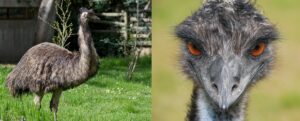
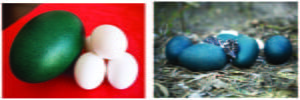
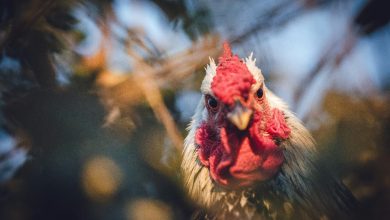
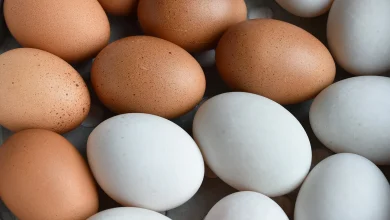
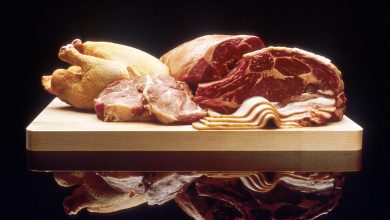
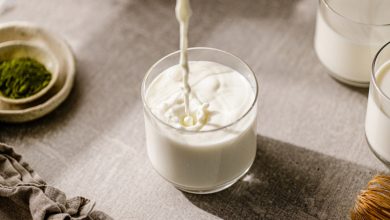
I got this site from my pal who informed me regarding this web page
and now this time I am visiting this web page and reading very informative posts at this place.